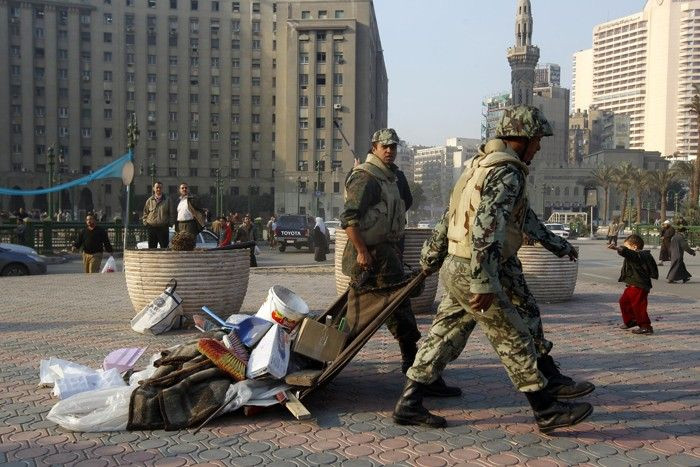Risk Aversion Has Been Well Contained

Tom Sowanick is Co-President and Chief Investment Officer of OmniVest Group in Princeton Junction, N.J.
Despite the fact that volatility has increased since the start of the Egyptian crisis on January 25th, true risk aversion seems to have been well contained. High yield credit spreads have risen about 10 basis points [bps] on the week. However, they still remain approximately 30 bps narrower than before the crisis started.
Investment grade spreads were unchanged on the week at about 8 bps narrower than the start of the crisis, which shows stability in the credit markets.
Political instability and spreading protests had a significant impact on emerging equity markets, with stocks falling 4.3 percent since January 25th. However, even in the emerging equity markets, we are beginning to see a bit of bargain hunting that may have started as early as this past Tuesday.
Since then, emerging equity market prices have started to stabilize and emerging market ETFs have closed the week on a strong note.
Perhaps even more telling has been the general rise of Treasury yields since the 3rd week of January, indicating that the Middle Eastern crisis is not expected to spread beyond that oil sensitive region. Also, the lack of frenzy to buy US Treasury notes and bonds may simply signify that US yields are just too low to even attract the most ultra-conservative investor.
Regardless, holders of US Treasury debt must be quite surprised at the muted response from the Treasury market to the overall turmoil in the Middle East.
It remains our view that investors need to seriously consider the true risks of holding high-quality assets, with special attention to high quality bonds, namely US Treasuries. Over the past several weeks, we have expressed our opinion that 2011 could likely be more painful for bond investors than it was during the bear market in 1994, and this view remains intact.
Despite the fact that sovereign interest rates are expected to rise, and perhaps sharply during the next 12 to 18 months, we believe that equity investors will not be harmed from the “normalization” of interest rates. We believe that equity markets will provide double digit returns versus very low single digit returns for the bond market at best.
The recent decline in the emerging equity markets, without a corresponding decline in other risk assets, suggests to us that investors should look at re-pricing emerging equity markets as an opportunity to discover value. Too many investors have complained in recent weeks that the near straight run up in equities has not provided them with an opportunity to establish equity positions. Now, the pull back has been in emerging equity markets, without discrimination. We believe that this creates an opportunity to either establish or add to equity positions.
For example, the BRIC ETF has dropped 3.6 percent in the past month, while the Indian Sensex fell nearly 8 percent. Neither the BRIC markets, nor India specifically, should be penalized for
the turmoil in the Middle East. Moreover, India’s Finance Minister announced on Friday that India’s GDP would likely exceed 9 percent for 2011.
By contrast, the Federal Reserve recently revised its GDP forecast upwards to around 3.9 percent for the current year.
While it is true that rising oil prices and other commodity prices have turned into headwinds, it is not our view that these head-winds are significant enough to choke the global economic recovery. In many instances, the rise of commodity prices has been the result of an increase in demand and not the decrease in supply from an exogenous shock.
Accordingly, we remain quite positive towards risk on strategies and view the price erosion of emerging stocks as an opportunity to either establish or add to current positions.
© Copyright IBTimes 2025. All rights reserved.





















